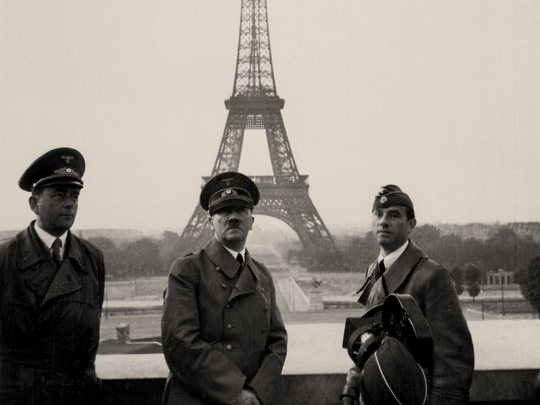Flickr / CC-BY-SA-3.0 / GFDL
1 – Adolf Hitler Invades France, Denmark, the Netherlands, Belgium & Luxembourg
The Battle of France was the German invasion of France and the Low Countries during the Second World War.
Beginning on 10 May 1940, German forces defeated Allied forces, eventually leading to the conquest of France, Belgium, Luxembourg and the Netherlands, bringing land operations on the Western Front to an end until 1944.
The German plan for the invasion of France consisted of two main operations.
In ‘Fall Gelb’, German armored units pushed through the Ardennes and the Somme valley to cut off and surround the Allied units that had advanced into Belgium.
When the Allied forces were pushed back to the sea by the well-organized German operation, the British government evacuated the British Expeditionary Force as well as several French divisions at Dunkirk.
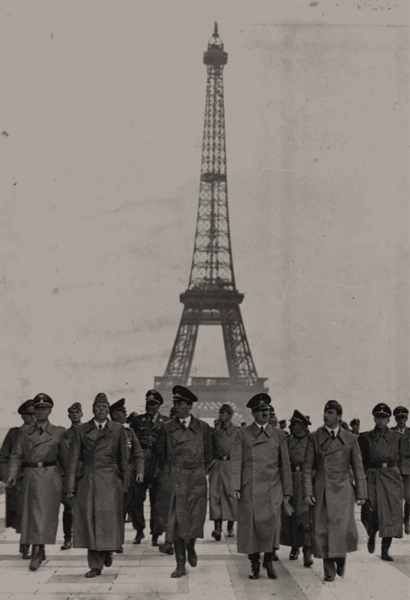
The German forces launched a second operation, ‘Fall Rot’ on 5 June 1940. While the depleted French forces put up stiff resistance, German air superiority and armored mobility overwhelmed the remaining French forces.
German armor outflanked the Maginot Line and pushed deep into France, with German commanders meeting with French officials on 18 June to discuss the armistice offered by Germany.
On 22 June, the Second Armistice at Compiègne was signed by France and Germany, which resulted in a division of France, whereby Germany would occupy the north and west.
Italy controlled a small zone in the south-east and an unoccupied zone (zone libre) would be governed by the Vichy government.
France remained under Axis occupation until the re-conquest of France by the Allies in June 1944.
2 – Lascaux Caves with Cro-Magnon Art Discovered by French Schoolboy
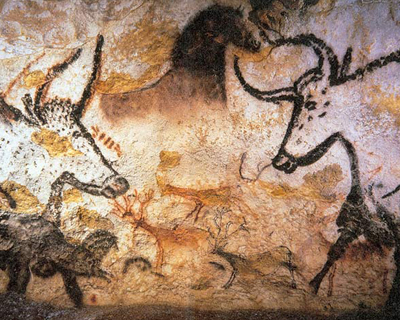
TheLascaux Caves is a complex of caves in southwestern France famous for its Paleolithic cave paintings. They are located near the village of Montignac, in the department of Dordogne.
They contain some of the best-known Upper Paleolithic art. These paintings are estimated to be circa 17,300 years old.
They primarily consist of images of large animals, most of which are known to have lived in the area at the time.
On September 12, 1940, the entrance to Lascaux Cave was discovered by 18-year-old Marcel Ravidat. Ravidat returned to the scene with three friends, Jacques Marsal, Georges Agnel, and Simon Coencas, and entered.
The teenagers discovered that the cave walls were covered with depictions of animals. The cave complex was opened to the public in 1948.
Since 1998, however, the cave has been beset with a fungus, blamed on a variety of things. In January 2008, authorities closed the cave for three months even to scientists and preservationists.
A single individual was allowed to enter the cave for 20 minutes once a week to monitor climatic conditions. Now, only a few scientific experts are allowed to work inside the cave for a few days per month.
The efforts to remove the mold have taken a toll, leaving dark patches and damaging the pigments on the walls.
3 – The Blitz in the UK
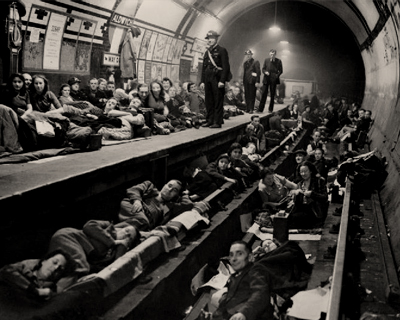
The Blitz, from the German word for ‘lightning’, was the name applied by the British press to the frequent, heavy bombing raids carried out over Britain in 1940 and 1941, during the Second World War.
It began with heavy raids over London on 7 September 1940, during what became known as the Battle of Britain.
Between 7 September 1940 and 21 May 1941, 16 British cities suffered aerial raids with at least 100 long tons of high explosives.
London was attacked 71 times, while Birmingham, Liverpool, Plymouth, Bristol, Glasgow, Southampton, Portsmouth, and Hull were attacked multiple times, and there was a minimum of one large raid on eight other cities.
From 7 September 1940, one year into the war, London was bombed by the Luftwaffe for 57 consecutive nights.
More than one million London houses were destroyed or damaged and more than 40,000 civilians were killed, almost half of them in London. Ports and industrial centers outside London were also attacked.
The main Atlantic seaport of Liverpool was bombed, causing nearly 4,000 deaths on Merseyside during the war, while the city center of Coventry was almost destroyed, as was Coventry Cathedral.
The eight months of bombing never seriously hampered British production and the war industries continued to operate and expand.
By May 1941 the threat of an invasion of Britain had passed, and Hitler’s attention had turned to Operation Barbarossa in the East.
In comparison to the later Allied bombing campaign against Germany, the Blitz resulted in relatively few casualties.
For example, the British bombing of Hamburg in July 1943 inflicted some 42,000 civilian deaths, about the same as the entire Blitz.
4 – The First Bugs Bunny Cartoon
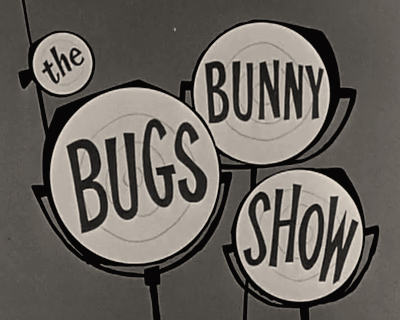
Bugs Bunny is an animated cartoon character, created by the staff of Leon Schlesinger Productions (later Warner Bros. Cartoons) and originally voiced by the “Man of a Thousand Voices,” Mel Blanc.
Bugs is best known for his starring roles in the Looney Tunes and Merrie Melodies series of animated short films during the golden age of American animation.
His popularity during this era led to his becoming an American cultural icon.
Bugs, a rabbit who is famous for his flippant personality, New York accent, his portrayal as a trickster, and his catchphrase “Eh… What’s up, doc?”.
Though a similar rabbit character began appearing in cartoon shorts during the late 1930s, Bugs Bunny is widely credited to have made his debut in director Tex Avery’s Oscar-nominated film A Wild Hare 27 July 1940.
Since his debut, Bugs has gone on to appear in more films than any other cartoon character.
He is the ninth most-portrayed film personality in the world and has his own star on the Hollywood Walk of Fame.
